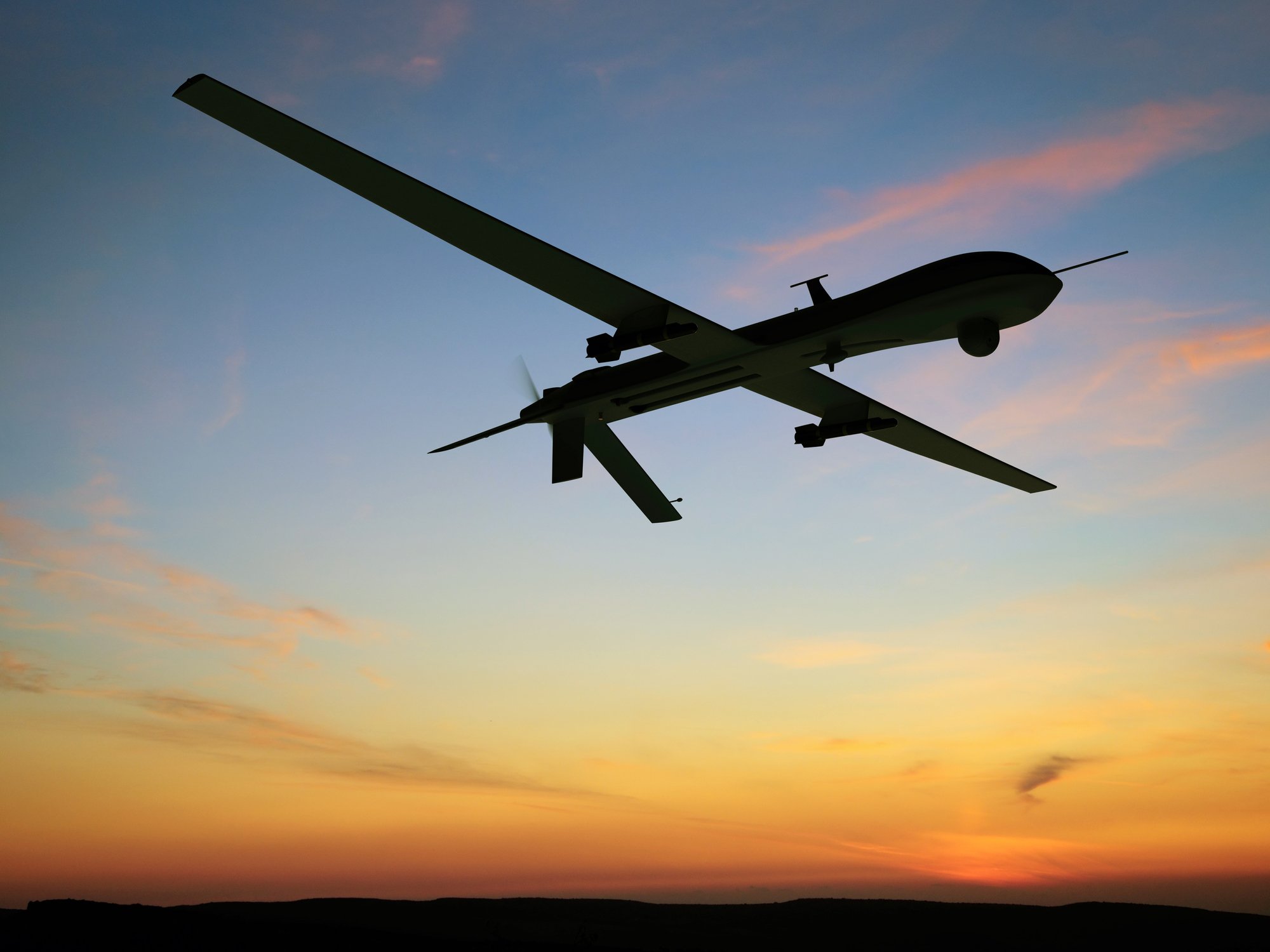AeroVironment (AVAV +5.34%) may not be a household name, but it is slowly shaping two of the highest-potential industries in the world: electric vehicles and drones.
Last night, the company reported fiscal-third-quarter earnings for the period ended Jan. 25, which showed that both businesses are headed in the right direction. Overall, revenue was up 47% from a year ago to $69.2 million and net income was $11.2 million, or $0.49 per share.

The Global Observer has attracted interest from Lockheed Martin as well as from governments around the world. Image courtesy of AeroVironment.
What's most exciting for investors is momentum in the company's two major markets.
Drones drive growth
In the fiscal third quarter, drones were the driver of growth and that's a turnaround from business being hurt by government cuts recently. Unmanned aircraft systems revenue was up 53% to $57.5 million in the quarter and gross margin was up 40% to $23.9 million.

Tiny drones like the one shown here could be the future of commercial drones. Image courtesy of AeroVironment.
A new partnership with Lockheed Martin (LMT +0.85%) will help to unlock potential value for the Global Observer, a large drone that can fly 12 miles above the earth for up to a week at a time. The partnership is intended to develop an integrated system of ground systems and technology to allow U.S. and international customers to buy a full suite of services along with the aircraft itself. This is a long-term partnership that will take three to five years to see meaningful results, but it could be a game changer for a company the size of AeroVironment.
The other exciting and underappreciated opportunity for AeroVironment is in the area of commercial drones. The company has been granted an FAA restricted certificate for commercial drone operations in the Arctic and is testing systems in Alaska and North Dakota. Again, this is a long-term play because the FAA hasn't even set out rules for commercial drones, but AeroVironment has the technology to build the products customers want. Working with the FAA this early in the game is a good sign that the company will be an early mover in the market.
Electric vehicles starting to take a turn
The other business for AeroVironment is making electric-vehicle chargers; it's a small portion of today's business, but it has the potential to be huge. Last quarter, revenue was up 31% to $11.7 million and gross margin was a small $3.1 million.

The TurboCord turns 120-V or 240-V outlets into efficient EV chargers. Image courtesy of AeroVironment.
The reason investors need to keep an eye on this business is because of the adoption curve that will take place with EVs. Early on, Tesla's vehicles have dominated the market and it's been the only company to really gain sales traction. But Tesla uses a proprietary plug and its growth doesn't do a lot for AeroVironment.
Where AeroVironment will see growth is when Nissan, Ford, BMW, and other carmakers begin selling a significant number of vehicles. Each is a partner with AeroVironment -- with each sale there's an opportunity to sell a home-charging system or at least a plug.
CEO Tim Conver said that an industry group has estimated that 170,000 plug-in EVs have been sold since 2010 and it's conceivable that number will grow to more than 1 million per year. That's a big opportunity and could be worth hundreds of millions in revenue for AeroVironment over the long term.
An opportunity for patient investors looking for growth
AeroVironment isn't going to grow like crazy next year, but it's setting the stage for massive growth over the next decade. If it can keep a leading position in drones as well as vehicle chargers, there's the chance to do more than $1 billion or more in revenue before 2020.
That's big upside for investors who can patiently wait for the company's two industries to mature into larger markets.







